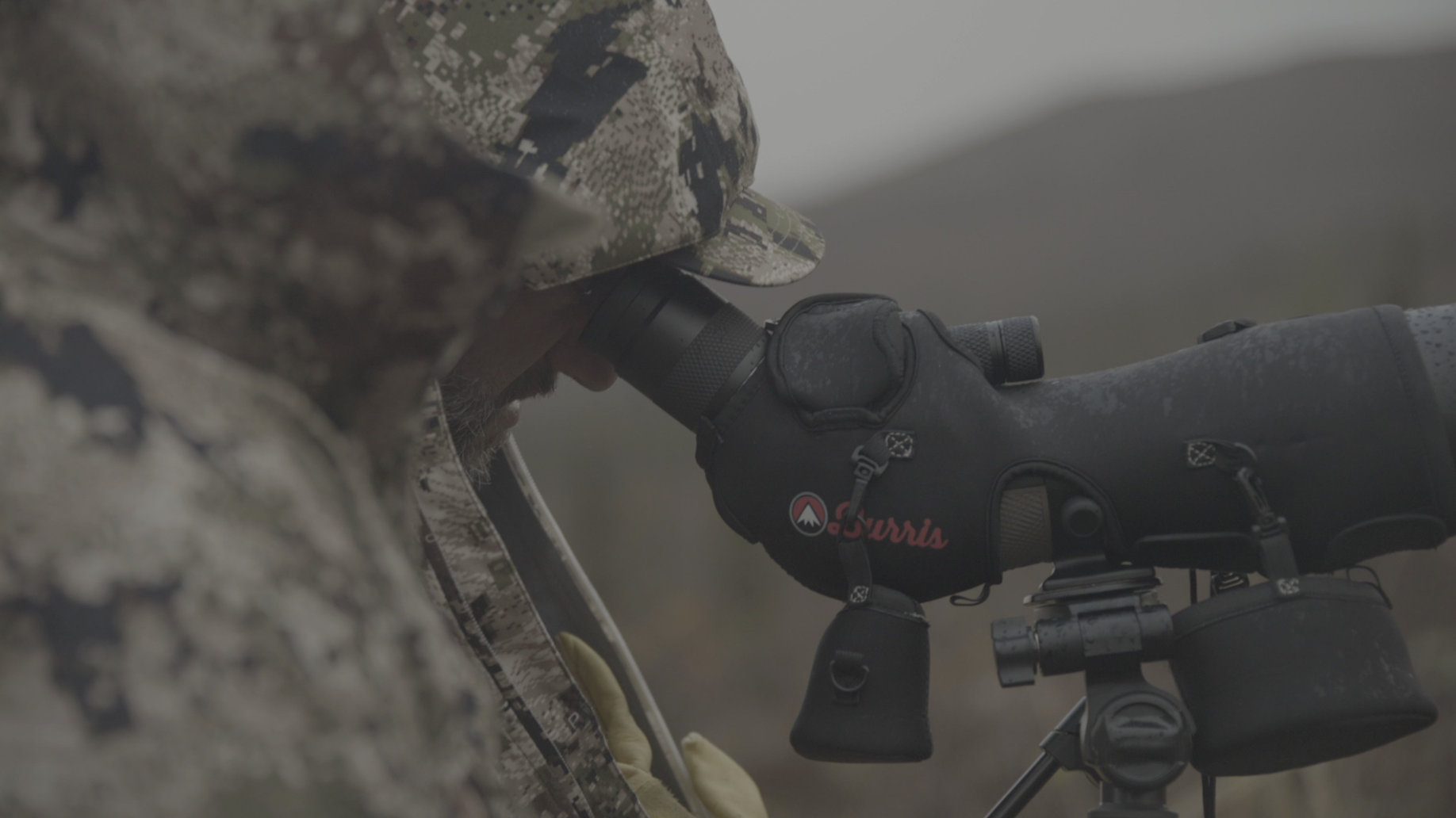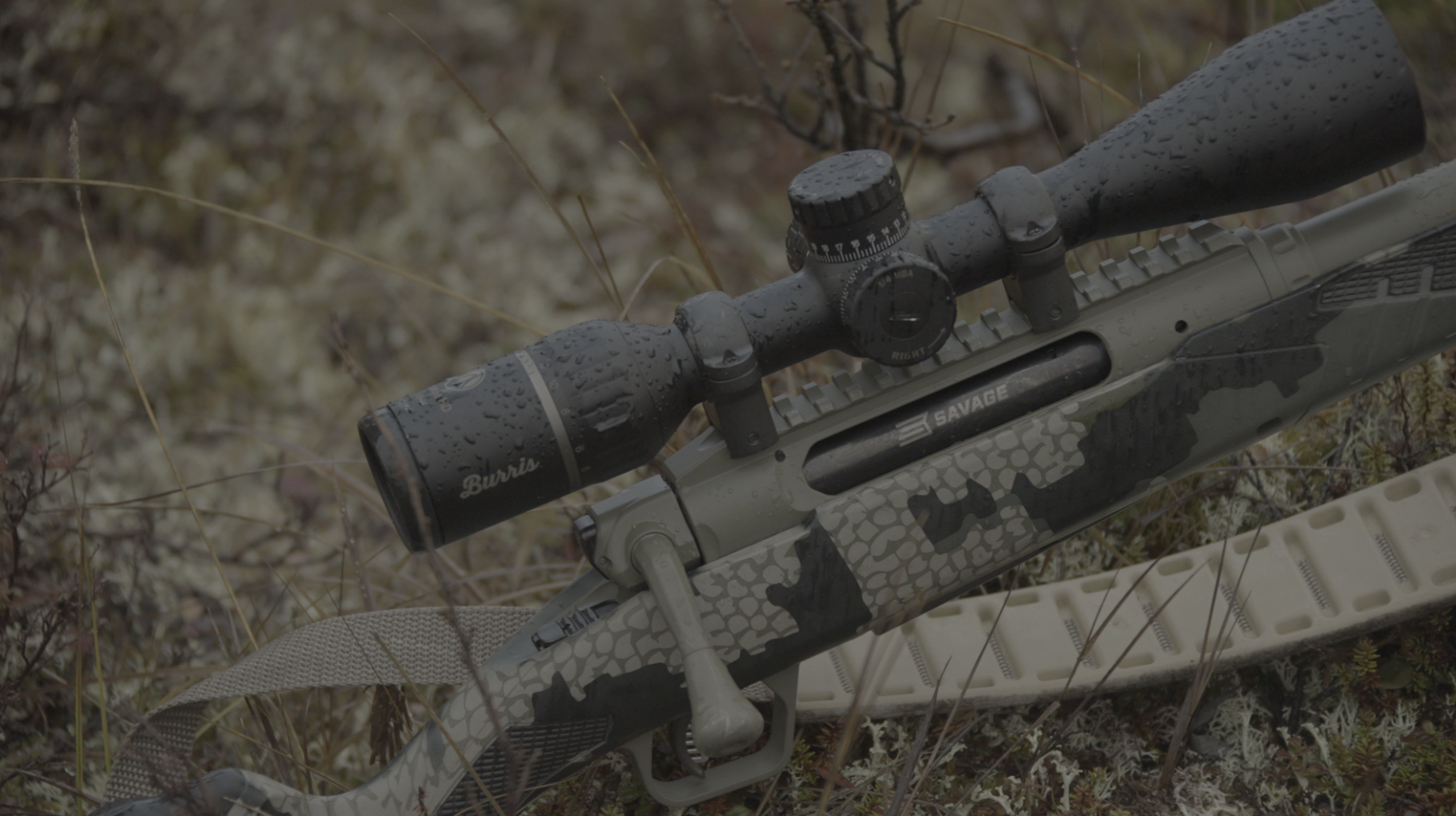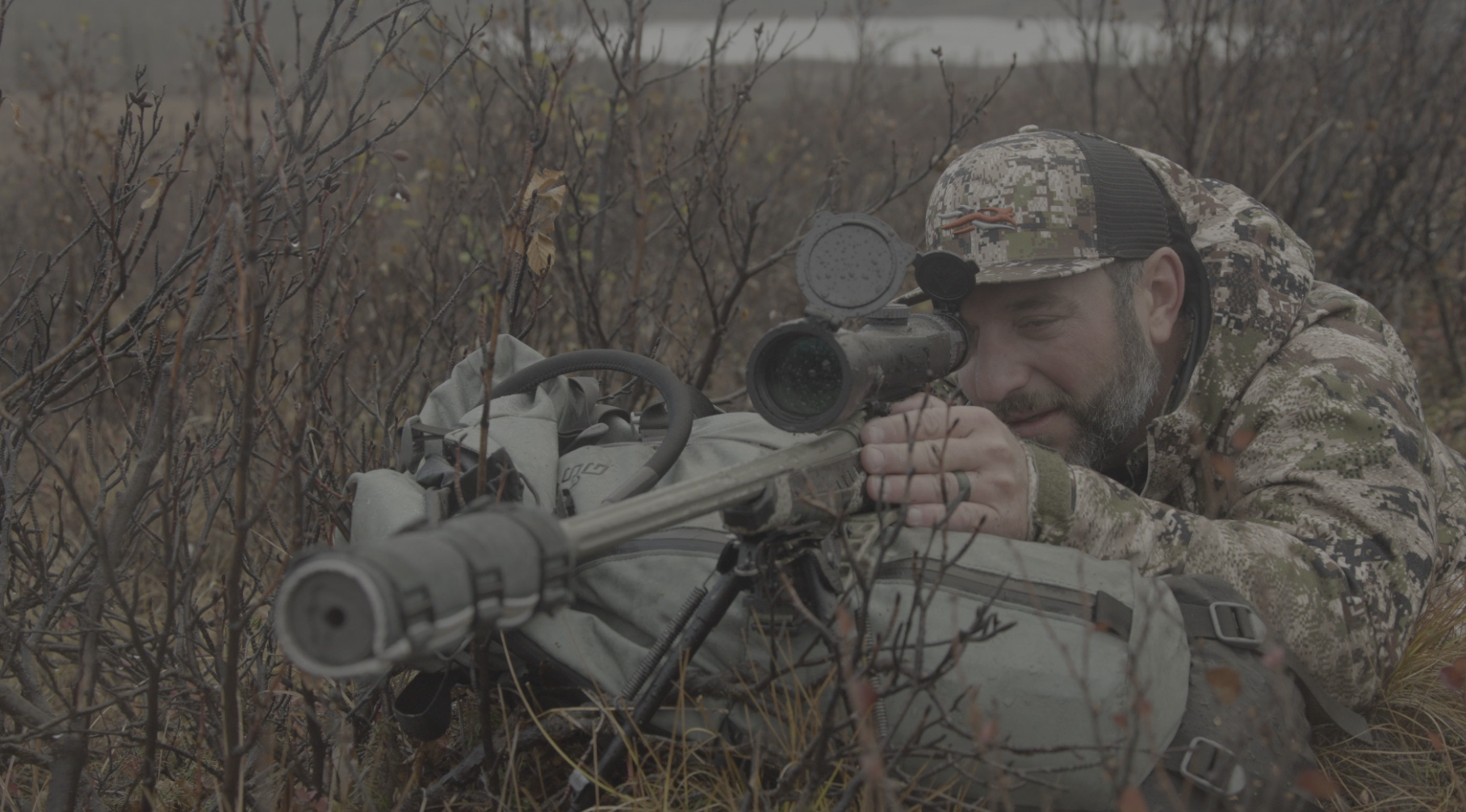Modern Innovation in a Pre-Historic Place With Burris Optics
Andy Husek 10.24.22

In this article, I’m going to walk you through the best Burris Optics for an Alaskan Caribou Hunt.

Last month I was able to spend several weeks out in the Alaskan tundra chasing Caribou. Fly-in hunts of this nature create a funny melting pot of pre-historic lands and animals’ that people have been chasing for generations with the latest and greatest technologies of the modern world. That’s where I found myself ,using all of the latest optics and gear while chasing the same animals that our ancestors chased with sticks and strings.
We partnered with Burris Optics on this trip and had a full kit of everything we could possibly need to locate, identify and track down the trophy Caribou we were going after. If you are looking to plan a back country hunt like this and are wondering which way to go in terms of optics, I will walk you through what I took and why I took it. Some people may decide it’s overkill but, you will quickly find out that a majority of the hunt is spent looking for or looking at animals. In my opinion, more glass in your kit is the way to go.
First thing that goes in to my pack in terms of optics is binos, period. I spend the most amount of time pulling these in and out of my harness, quickly scanning and surveying the terrain looking for animals. I probably look through them at least every 5 minutes if not more when actively hunting. On this trip we were using both the Signature HD and Droptine binos from Burris in 10×42. To me, that is the perfect magnification and usually keeps the overall size and weight to a reasonable level. These are also offered in 8×42 but for me that is just not quite enough magnification, especially when hunting the tundra where you can see about as far as your eyes will let you in every direction. You can certainly jump up to something like a 12×50 which the Signature HD series has available but that is something I don’t see as necessary when carrying the next piece of optics equipment I am going to talk about, the spotting scope.

The 2nd thing to go in my pack when it comes to optics, is my spotter . On this caribou hunt I was using the Signature HD 20-60x85mm spotting scope. Now, when every ounce counts on a fly-in trip and everyone is restricted to very specific amounts of gear and weight, hunters immediately start to look for places to shave ounces. To me though, the spotter is a non-negotiable item. At a distance, all of these caribou look similar, big! You need a spotter to really pull them in close so you can analyze the beams, the tops, the shovels, the bez’s etc. When just looking through the binos you can’t really see the intricacies of each individual animal. I was looking at one bull at about 300 yards that had crazy long back scratchers. I pulled out the spotter and quickly realized he had weak tops, an undersized shovel and unremarkable bez’s. Still a great animal but I got fooled by his back scratchers into thinking he was the one….I passed on him and ended up taking a much larger bull. Here are some of the built-in features of the Signature HD spotter that make it one of my most important pieces in my kit:
- Built-in sun shade reduces glare and protects the objective lens from rain and snow
- Both coarse and fine focusing adjustment are possible with the forward mounted focus knob
- Eyecup can be adjusted to accommodate eyeglasses
- Lightweight, durable design with a die-cast magnesium body that is armored for greater protection in the field
- Angled eyepiece and rotating tripod mount make it easy to use whether you’re standing or prone
The last but most critical piece I want to talk about is your scope selection. This is what makes or breaks a hunt. You have spent all the time and effort locating animals, picking out which one you are going to take and now the final piece, you must make a clean and ethical shot. We were using two very different scopes on this hunt both of which are more than capable depending on one’s personal preference and capabilities. This is where the modern innovation really shines over pre-historic methods.

On one guns we had the Burris Signature HD, which is a more traditional style scope with manual exposed turrets and an illuminated reticle. This is well suited for a proficient shooter who has done his prep work before the hunt. Like I said, in the tundra you can see just about as far as your eyes, or the fog, will let you so you should be well versed in shooting at range and familiar with your weapon. Not always necessary but sometimes there aren’t a lot of places to hide and being able to shoot 500 yards can save your hunt! The Signature HD scope comes in several different variations and styles and if a more traditional style scope is what you are into, I suggest heading over to the Signature HD rifle scope page to check them out for yourself.

On the second rifle we were using my favorite modern marvel and go to optic, the Burris Eliminator V. If you are not familiar with the Eliminator head on over and check it out here. The Eliminator is a range finding rifle scope that will automatically adjust your crosshairs at various ranges out to 2,000 yards! With their comprehensive cartridge list, you can find just about every single caliber and bullet combination to input your variable into the scope. And if you can’t find it or are using hand loads they have an awesome set of ballistics tools on their site to help you out, https://www.burrisoptics.com/ballistics. We had an awesome sequence where we shot one caribou at just over 200 yards and the herd took off and came to a stop at over 400 yards with several other shooters in the group. We quickly got down on the gun, hit the range button, got our hold over, adjusted the parallax and had our 2nd caribou down in a matter of seconds at drastically different yardages. There is no way you could have, swapped shooters, acquired range and dialed in as quickly as we were able to with the Eliminator.
This was a great hunt that was cut a little short due to some serious bear activity in our area. You can see the full hunt details in our All-In episode coming soon to Alloutdoor.TV
For more information on all of the Burris Optics used in the article, head over to Burrisoptics.com.
This content was brought to you in partnership with Burris Optics.

